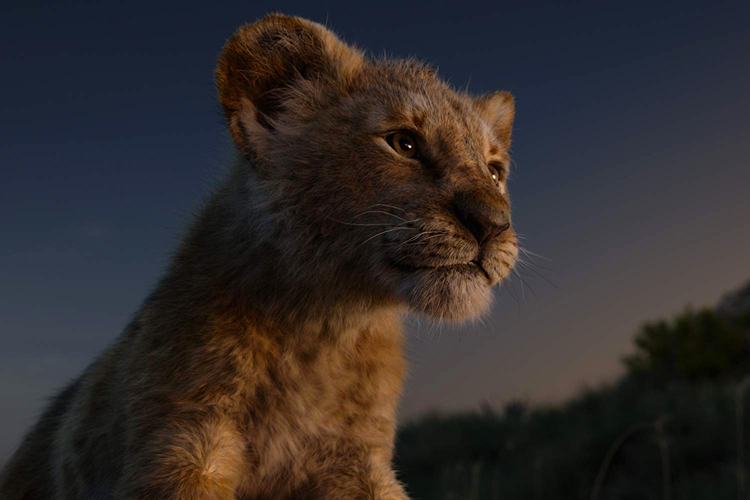The Lion King is not a movie.
Let me be more specific: Disney’s 2019 remake of The Lion King is not a movie. The 1994 iteration of The Lion King is absolutely a movie, and a great one at that—a high mark of the Disney renaissance, a landmark in hand-drawn animation, and a formative moment for an entire generation. But this new, photorealistic remake of the 1994 classic? It’s not a movie.
Why not? Let’s start by defining “movie” in the simplest terms possible. Movies are moving pictures that work in conjunction with audio. In various ways, all movies are marriages of sight and sound—even “silent” films use sound to augment what’s seen on screen. Movies permeated by silence are defined by their sparing use of sound; movies with asynchronous audio are defined by experimentations with sound. If the synthesis of sight and sound is what makes a movie, The Lion King struggles to fit the bill.
Granted, its work in the visual department is magnificent to behold. This remake represents a new pinnacle in computer animation. The animals and their environment look stunningly real: from the rhythmic sway of the African grass to the stretching sinews of an anxious antelope, this circle of life flows together as naturally as nature itself. But then the animals talk, and it plunges into the ninth circle of hell.
The ever-present problem of The Lion King is that photorealistic animals are not good fits for human speech. Sight and sound—the cornerstone pieces of any movie—are completely incongruous in this remake. What we see are expressionless, true-to-life lions moving their mouths in realistically limited ways; what we hear are clearly identifiable famous people talking at the same time. The illusion never fuses together. My physical eye sees animals making noises of some kind, but my mind’s eye—informed by what I’m hearing—just sees voice actors in a recording studio. The disconnect intensifies when the beasts begin to sing.
The thing is, The Lion King could’ve been a movie. In fact, it’s sometimes a movie. There are wordless sequences that shine bright with potential. Scenes without dialogue—some of which are new additions to the story, like an extended visual depiction of the circle of life—pulsate powerfully with quiet beauty. You begin to wonder why Disney bothered with voice actors at all. The animators are incredible at communicating emotion through the animals’ eyes and movements: when Simba curls into Mufasa’s dead body with nature documentary realism, his grief is pronounced and profound. When he moves his mouth around and JD McCrary’s voice emanates from nowhere, the magic vanishes.
There are small, enjoyable flourishes dotted throughout. The comedic actors—namely John Oliver, Billy Eichner, and Seth Rogen—seem to have had room to improvise, and their additions are frequently funny. The nostalgia effect, however shamelessly it’s exploited, is an indisputable factor. But The Lion King is only sometimes a movie. Most of the time, it’s a feature-length proof of concept narrated by expensive voices, and nothing more.
★★ (2/5)




